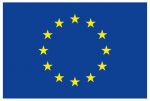Achilles Tripolitsiotis, Asst Prof Panagiotis Partsinevelos, Prof Stelios Mertikas
GNSS positioning accuracy in urban canyons or under tree canopies is degraded when satellite signals are obstructed by buildings, geomorphology, and vegetation. This is a major problem for engineers, who are forced to draw on expensive, time-consuming solutions to gain centimetre-level positioning accuracy. To confront this challenge, Space Geomatica has developed a prototype drone equipped with a highly accurate GNSS receiver and a camera/laser measuring system that retrieves the coordinates of custom surveying poles featuring Wi-Fi, a prism, and a target marker. The team’s image processing algorithms and error correction techniques provide real-time, centimetre-level coordinate estimation and can simultaneously measure multiple moving surveying poles. The processing is performed on-board the UAV without any ground-based hardware. Drones2GNSS thus provides a fast, reliable, cost-effective alternative for absolute coordinate positioning in obstructed environments where GNSS fails. It can cover multiple targets, including cars, people, and vessels. It offers a basis for other related challenges, including UAV GNSS networks, indoor positioning, and error mitigation.






